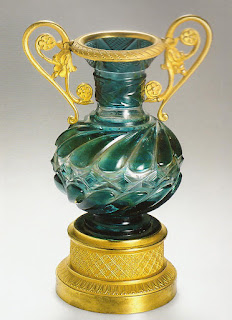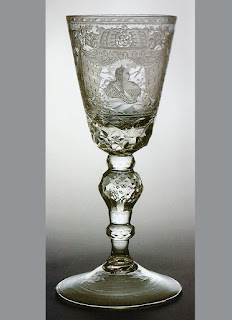WHERE DO THE GLASS COLUMNS GROW FROM?
This happened about one hundred and fifty years ago.
The famous ballerina Taglioni performed in Petersburg at that time. The
ballerina's father, choreographer Taglioni, decided to arrange the performance
of his daughter as rich as possible. For one scene, he ordered glass columns.
They were so beautiful that newspaper reviews of the ballet were devoted not so
much to the art of the ballet dancers as to the description of these columns.
 |
| Products of the Russian Imperial Glass Factory |
Who made them? Maybe Taglioni bought them at a palace
or museum? Not! These columns were made at a modest St. Petersburg plant. It
played a big role in the history of Russian glassmaking. Amazing craftsmen
worked here.
Not only the columns for Taglioni's ballet glorified
them. At the beginning of the nineteenth century, the Moscow Tsar decided to
make a gift to the Persian Shah. And at the St. Petersburg plant they made an
amazingly beautiful thing. It was a bed of blue and clear crystal, and nine
crystal fountains were around it.
Let us recall the crystal chandeliers of the Peterhof
Palace and the Hermitage, the Alexander Palace in the city of Pushkin and the
Ostankino Museum. All these amazing things are made by masters of the
eighteenth century!
 |
| Products of the Russian Imperial Glass Factory |
We also know about glass bells, which were made for a
special fountain. They were of different sizes - from the smallest to the
largest - and rang from the jets of water hitting their walls ... Yes, it all was.
But do not forget about those masters who, many
years ago, fled from Kyiv looted by the Mongols, taking their art to primeval
forests. It is on their shoulders that the glassmakers of Moscow and St.
Petersburg plants stand.